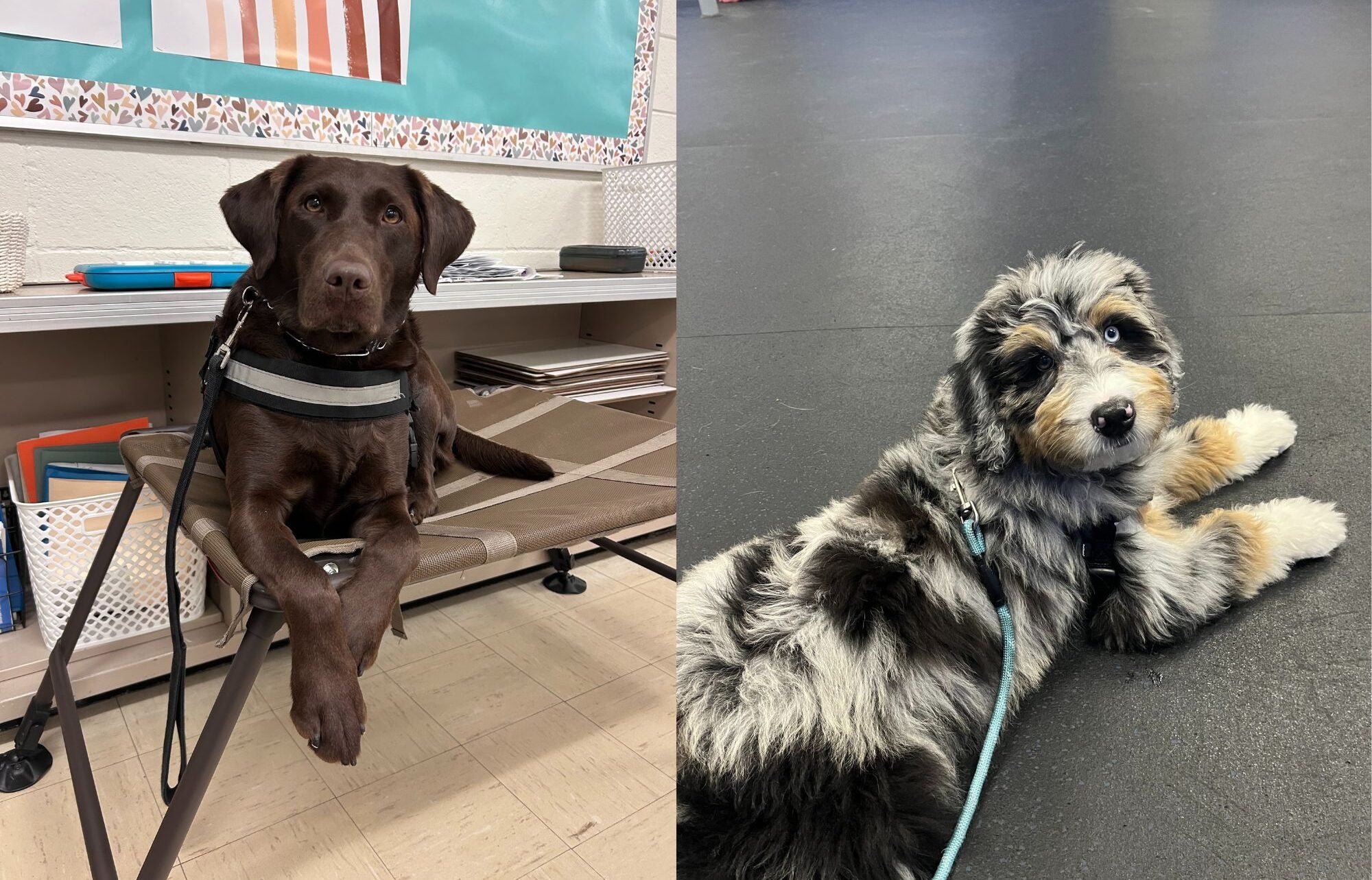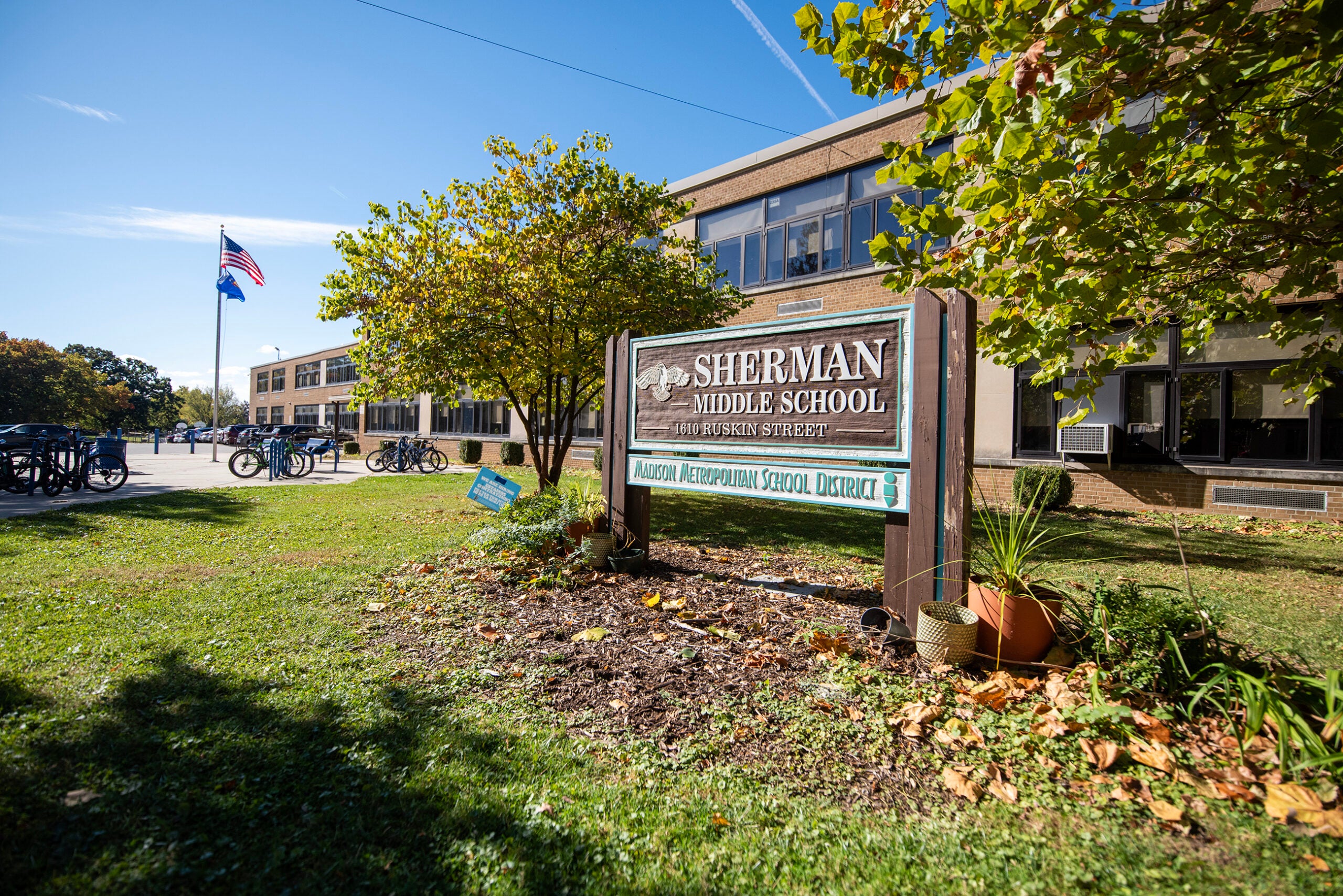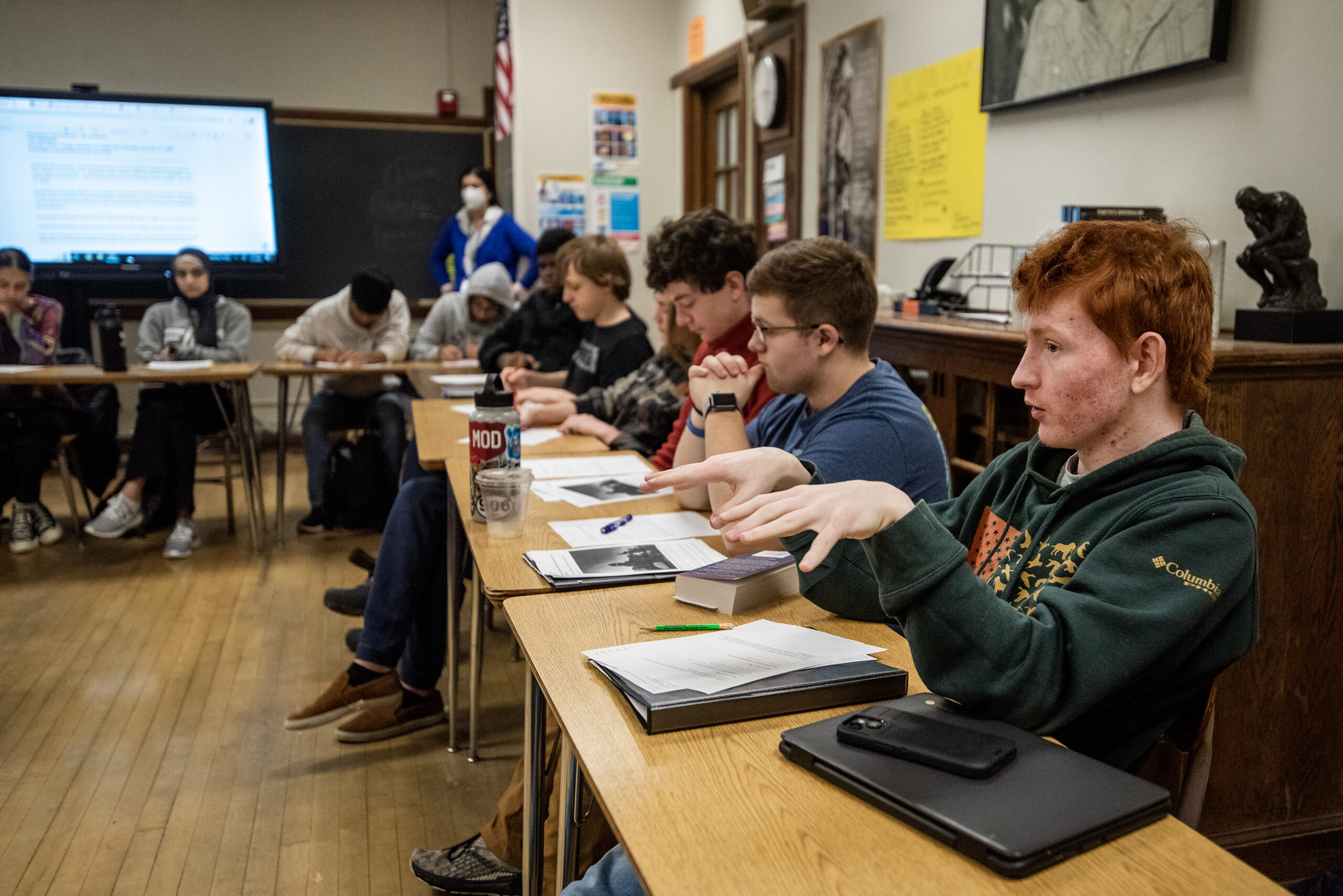As students in one Wisconsin school district head back to the classroom this fall, a furry friend will be in some school buildings to welcome them back for another school year.
In 2021, the school district in De Pere brought in a chocolate lab named Charlee to work in Dickinson Elementary School. Since then, the district has added dogs at all of its elementary schools. Now, a bernedoodle puppy named Oakley is in training for a future alongside fifth and sixth graders at Foxview Intermediate School.
Dickinson Principal Luke Herlache and his team were among the first staff in the district to advocate for a district-owned therapy dog in their school. Unlike other therapy dogs that might regularly visit schools, district-owned therapy dogs like Charlee are in their school full-time and have multiple staff handlers.
News with a little more humanity
WPR’s “Wisconsin Today” newsletter keeps you connected to the state you love without feeling overwhelmed. No paywall. No agenda. No corporate filter.
Herlache said on WPR’s “Wisconsin Today” that Charlee has proven to be a successful tool for calming down students who are feeling too upset to be in the classroom.
He said it takes an average of 10 minutes to get students “back on track and ready to return to the regular routines of the school day.”
“We’ve definitely seen a more efficient de-escalation for our students,” he added.
Parent praises Charlee for helping her child engage in reading
Charlee regularly meets with students who struggle with anxiety coming to school in the morning. But Charlee serves other purposes at Dickinson, too.
She is also an educational tool. Young students compose letters to Charlee to practice their writing skills, and older students write back on her behalf. Students practice their literacy skills by reading to Charlee. And extra time with Charlee is an incentive for students who have done a good job staying on task.
Dickinson parent Lauren Ritter said her son, Graham, benefitted from Charlee being in the classroom. Graham has autism and ADHD, and Ritter said he has had trouble focusing in class, especially during quiet reading time.
“He was able to go into a corner and read to Charlee.” Ritter said. “That really gave him more motivation to engage in his reading, and he actually read a fair number of books that way.”
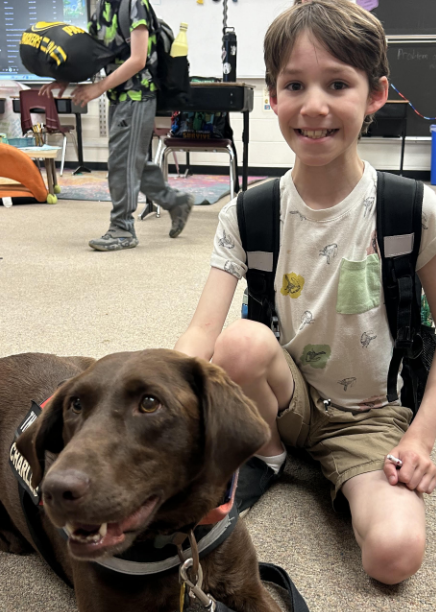
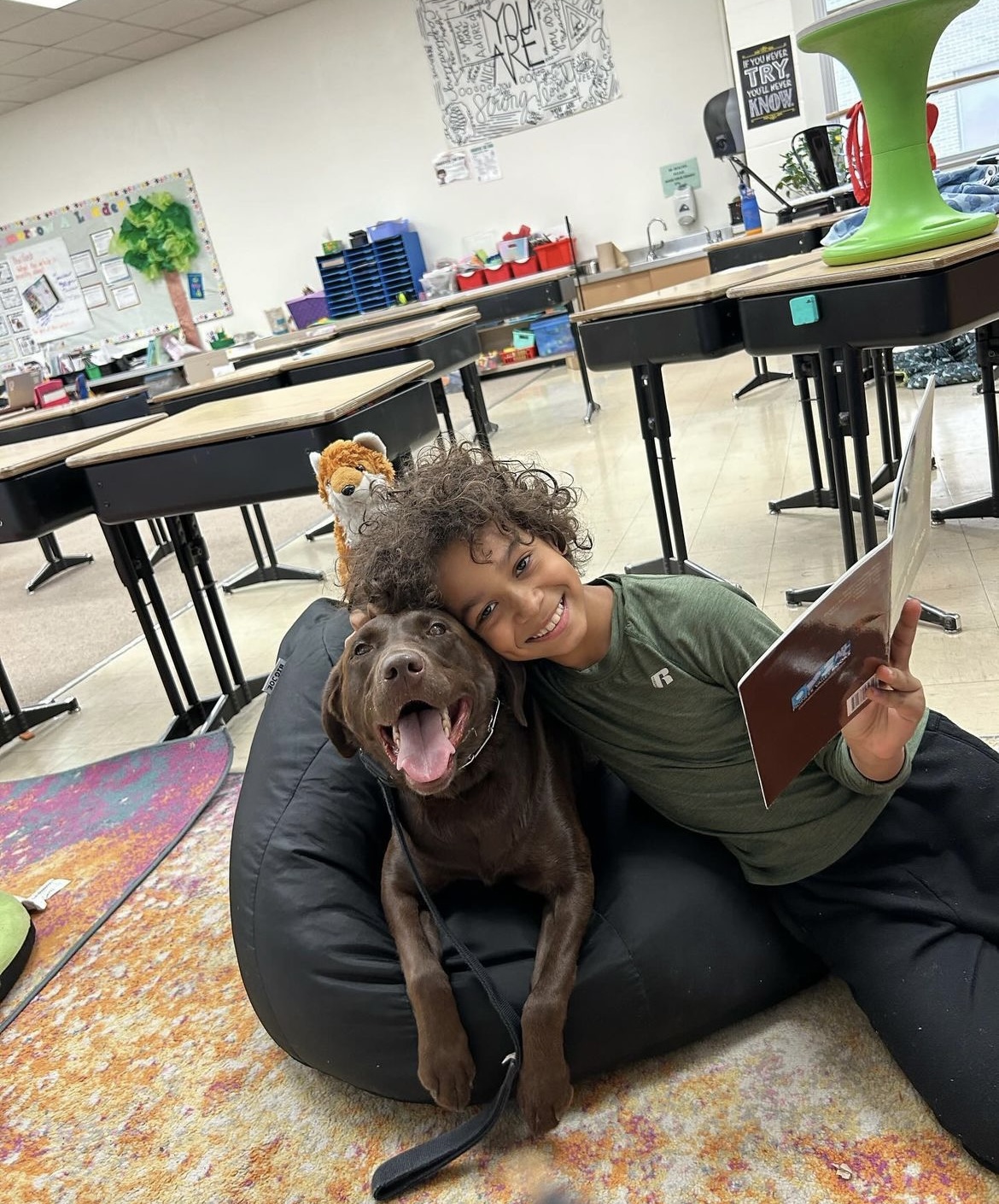
From the left, Graham Ritter poses with Charlee in his fourth grade classroom. On the right, Santiago, a fourth grader at Dickinson Elementary, reads to Charlee. Photos courtesy of Lynessa Tlachac
Other schools take note of therapy dog success
Entering the fifth grade, Graham is moving on from Dickinson and joining Foxview Intermediate School. Inspired by Charlee’s success at Dickinson, Foxview recently requested a therapy dog of their own.
Foxview Principal Andy Bradford is now preparing his school for the arrival of Oakley, a bernedoodle puppy who is training to officially start working as a therapy dog next year.
Bradford estimates that the cost of a district-owned therapy dog like Oakley is between $7,000 and $10,000. That figure includes the cost of the initial purchase, specialized training and an ongoing stipend for the home care provider to cover the dog’s basic needs.
He said the costs are primarily covered by an annual community fundraiser called the Redbird Rally, and the district covers the rest.
“It’s an investment in our children: being able to provide something that can help quickly bring students back to a calm state and can be conducive for their learning,” Bradford told “Wisconsin Today.”
The precedent set by Dickinson Elementary makes it easier for schools like Foxview to navigate the logistical challenges of having a district-owned therapy dog. The Mount Horeb Area School District recently acquired their own therapy dog, Crumble, to help students with the transition back to school after last spring’s shooting outside Mount Horeb Middle School.
Herlache used his own school’s experience to consult with Mount Horeb on how to prepare. A challenge Herlache has considered: What should schools do about students who can’t or don’t want to interact with dogs?
Dickinson’s solution is to send an opt-out letter to parents at the beginning of each academic year. It starts a conversation with parents about how the school can accommodate a particular student’s needs, whether it’s because of an allergy or otherwise. They also prepare students who might be apprehensive about dogs by teaching them how to interact with Charlee. The school does this through training videos and easing them into the experience.
Herlache said therapy dogs like Charlee have proven to be well worth the challenges.
“It took a few years to convince people that this was something that we should turn into a district-owned program,” he said. “But we’ve done that, and there’s actually quite a bit of excitement from school officials in other districts, and certainly the community at large.”

